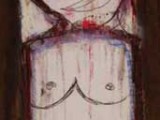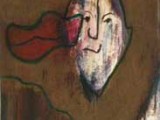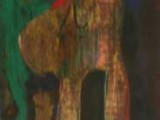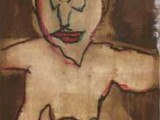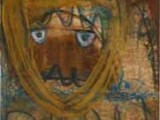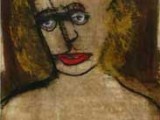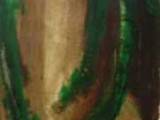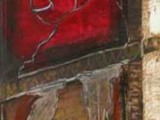2002: A Signature Year
A Signature Year includes three major works on acid free Stonehenge paper: “Roland’s Friends 2002: Aztec Deities”; “The Convergence Series”; and “The Goddess Mother Earth in Green and Brown.”
The paintings and drawings in 2002 A Signature Year display my skill in the art of painting and drawing with unique applications of mixed media including chapapote (tar) dissolved in my medium, Sal-Zar.™ The vertical images, all of the same size (50” x 25”), do not require glass, as my medium is light fast, non-photo chemically reactive, and non yellowing.
“Roland’s Friends 2002: Aztec Deities” consists of eleven drawings. I did not seek out the Gods; the Gods came to me. For example, I didn’t research the mythology on the God Tonatiuh, which translates into English as “He Who Makes the Day”. There is no relationship, other than accidental, between the named God and the painting I did of this God. I used the Deities as a tool, enabling me to concentrate on the abstract elements in each figure as it developed in the paintings.
“The Convergence Series” contain twenty paintings in a numbered series in contrast to the Aztec Deities that have titles. Convergence means a ‘coming together’. I limited the series to twenty paintings. In Aztec mythology twenty is a magical number. It is used in the long count for the Aztec calendar. It also describes a ‘whole person’ in the Nathaul language, as this is the number of fingers and toes on a human.
After these works I created a body of drawings/paintings that I call: “The Mother Goddess in Green and Brown”. The central panel is the Mother Goddess, flanked by two triptychs: one triptych in ‘Green” and one in ‘Brown’. While I would like to keep this as one large panel painting, it is possible to view each piece as a stand-alone painting: All employ chapapote and oil pastels and also include enamels in Sal-Zar Medium.™
I believe that my art is about values and the paintings and drawings in2002 A Signature Year demonstrates these values and that they declare a ‘signature’.
The English & Spanish (Nahuatl) Titles of the images follows:
1. Yellow Face: Xiuhtecuhtli-Ixcozauhqui
2. Salt Woman: Huixtocihuatl
3. He Who Makes the Day: Tonatiuh
4. Our Flayed Lord: Xipe Totec
5. Smoking Mirror: Tezcatlipoca
6. Two Rabbit: Ome Tochtli
7. Lord of the Nose: Yactecuhtli
8. Cloud Serpent: Mixcoatl
9. Defied Woman: Cihuateto
10. Obsidian Butterfly: Itzpapalot
11. Little Feast of the Dead: Miccailhultontli
I had originally done a series Aztec Deities in 2000, using names I uncovered in a text of 11 Aztec Gods. These are on paper mounted to wood: size: 9 ½” X 7”. While I think the smaller head images are acceptable, and together make a statement; the larger works move out the “head images” to include an elongated body, or frame for the Gods: size does make a difference. Both employ chapapote (tar) and spray enamels and oil pastels as the media. The larger works appear to be drawings, line drawn in the chapapote medium.
The works-on-paper 50”x25” are all figurative abstract. I didn’t research out the God Tonatiuh, for example, which translates as “He Who Makes the Day” in English, to determine how Tonatiuh should be shown in the painting. There is no relationship, other than accidental, between the named God and the painting I did of that God. I did not seek out the Gods; the Gods came to me. What I was doing was using the Deities as a free association tool, enabling me to concentrate on the abstract elements in each figure that developed as I did them.
Salazar, San Miguel de Allende, Gto, México* © Salazar, 2002
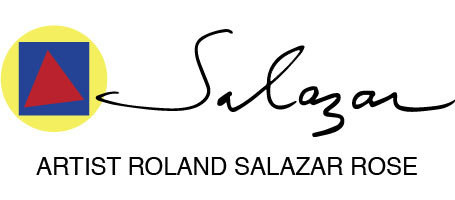 Salazar
Salazar